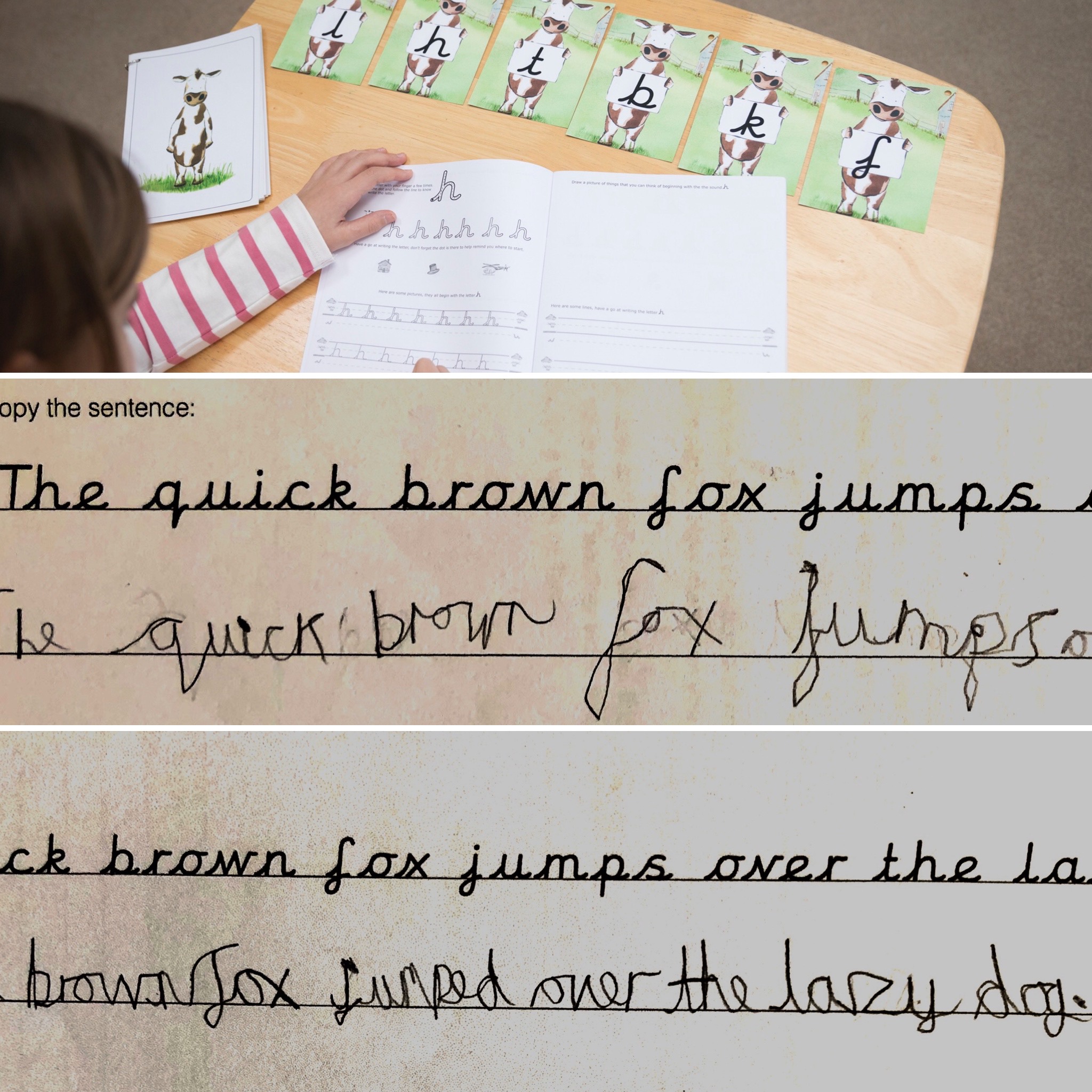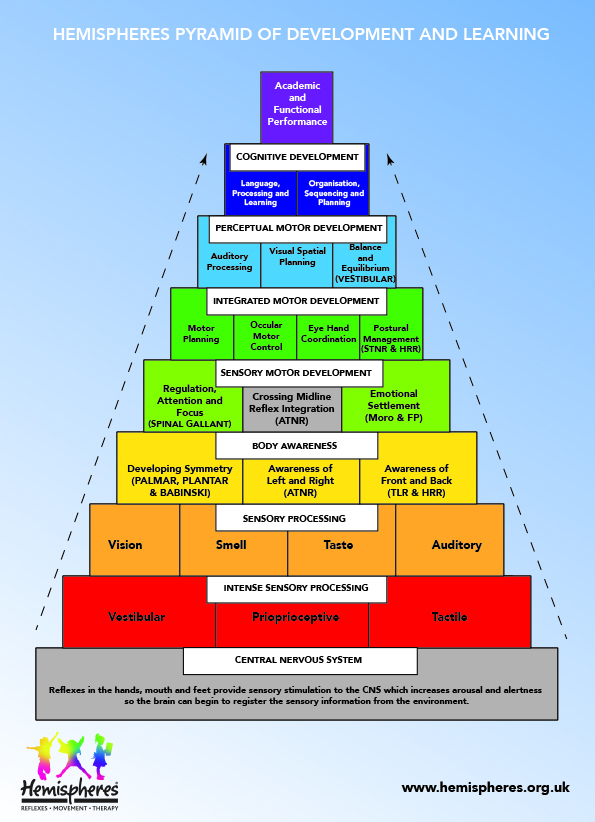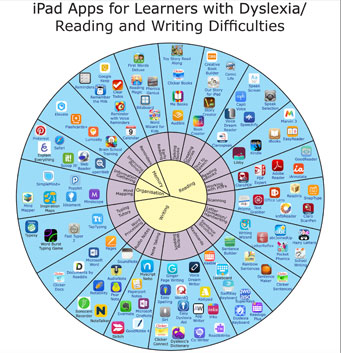Articles
What are the Reflexes?

Vulnerability and purpose surround the early stages of child development. In the womb and in early life, when your child’s central nervous system is immature and unable to make decisions for itself, their responses are regulated and controlled by a set of primitive ‘instructions’ deep within the oldest part of the brain, the brainstem. These are called the ‘primitive’ reflexes.
The reflexes are involuntary in nature, and act from the subconscious (unknowing) parts of the brain. Whilst they initially function with little control they seek to ‘wake up’ a budding central nervous system and help it to learn to process and network with a new and stimulating environment. At the same time the CNS is busily building well-organised and direct paths of communication between different parts of the brain itself, as well as linking up the muscles of the body with the control centres within the brain.
The brain is made up of different levels of control, but in essence the older, deeper parts of the brain control our subconscious, automatic body functions as well as our emotional and instinctive reactions. The upper, newer parts of the brain control the actions and things we do that we are aware of (conscious behaviour), auditory (hearing/listening) and visual (seeing) processing, language, thinking and learning skills.
At birth, and in the first 12 months of life, a baby is mainly functioning under the umbrella of the lower centres of the brain; movements tend to be random and influenced by set primal patterns. These are triggered by the activation of the primitive reflexes. These reflexes act like a navigation system to the central nervous system because they produce predictable and specific patterns of movement.
The repetitive triggering of the reflexes and the activation of these movement patterns helps to stimulate corresponding areas of cells in the higher centres of the brain. As these patterns are repeated the conscious areas of the brain ‘learn’ the sensory and movement skills it needs to control movement in a more precise and coordinated way.
Higher control of the reflexive movements produces sensory and movement pathways that strengthen and develop; these help your child learn skills such as grasp and release, sucking, chewing, rolling, crawling and walking.
Increased control in the higher centres of the brain triggers a settling of the reflex patterns. They are no longer required to help the brain develop. Likewise the upper parts of the brain have established direct communication pathways to the muscles of the body through the lower centre of the brain. This replaces those early, less efficient pathways in each primitive reflex: a bit like having a motorway rather than just a little A road.
In essence what has happened is that each reflex has emerged and strengthened, made the necessary routes and connections it was meant to and then settled into an inhibited state, so that better skills can develop.
Reflexes have set times they are expected to emerge and settle; this period of time is very early in development, between conception and 3 years of age.
Whilst each reflex is important and performs in a set way so that specific skills start to emerge, they should not be seen in isolation of each other. Each one is in fact part of a whole and much bigger picture: a chain of reflexes.
Just like in a domino chain the earlier reflexes have an influence on the emergence and settling of later reflexes. If the earlier ones do not settle and fall away then the later ones get disrupted too.
For some children, and for many reasons, some reflexes do not make their necessary connections, causing an “error”. The body then fails to learn the ‘lesson’ it needs to learn. This is commonly called a “retained reflex” because the involuntary patterns can still be seen in the affected child’s neurological system and in the everyday skills and things the child needs to learn and do.
At Hemispheres we use this natural pattern of reflex development as a ‘benchmark’ to identify immaturities within each child’s development. It allows us to see where the reflex chain is broken or disrupted and the effect that has had on that child’s skills.
Through the use of set movement patterns we can help the retained reflexes settle, as they should have – effectively re-forging and joining all the links in the chain. Then the child’s system can adapt and reset itself, learning the skills it needs to move on.
In summary, each reflex has the following:
• A predictable pattern of movement.
• Influences specific parts of the brain.
• Together the reflexes build the neural connections that form in a maturing brain.
• Teaches the body specific movements and activities.
• Follows a set sequence of emergence and inhibition.
• Has an influence on the development of the next reflexes in the ‘chain’.
You might also be interested in

Hemispheres Think Write Improves Handwriting

Hemispheres Pyramid of Development and Learning

Check out these Dyslexia Apps
Copyright © 2024 | Privacy Policy


